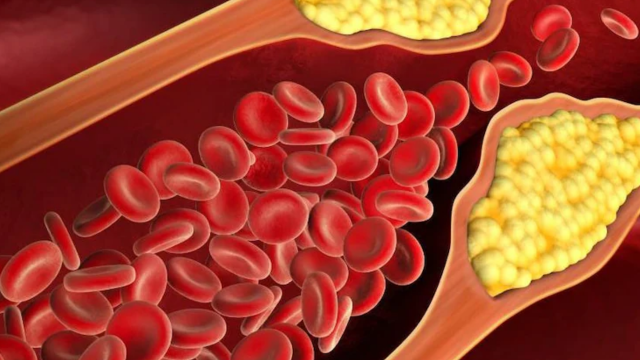November 11, 2025 (Navroze Bureau) : A new wave of hope is sweeping through the medical world as researchers announce early success in a gene editing therapy that may reduce cholesterol and triglyceride levels by nearly half. Scientists are calling it one of the most promising breakthroughs in cardiovascular treatment, a possible future where heart disease prevention begins not with a pill, but with a precise genetic tune-up.
The research, conducted by an international team of geneticists and cardiologists, focuses on CRISPR-based editing tools designed to switch off specific genes responsible for unhealthy lipid levels. Instead of treating symptoms again and again with lifelong medication, the therapy targets the root cause. Think of it as repairing a leaky pipe instead of endlessly mopping the floor.
One of the key genes in the spotlight is ANGPTL3, known to influence both cholesterol and triglyceride levels. People who naturally carry a mutation in this gene have extremely low lipid levels and a much lower risk of heart disease. Inspired by this natural protection, scientists developed a gene editing method that mimics the effect.
In early trials involving animal models and preliminary human cell studies, researchers found that a single dose of the gene editing therapy led to a 40 to 55 percent reduction in LDL cholesterol and a similar drop in triglycerides. Even more impressive, the effect appears long-lasting. Instead of daily pills, the therapy may only require one injection in a lifetime.
Cardiologists are cautiously excited. High cholesterol and triglycerides are two of the biggest drivers of heart disease, the world’s leading cause of death. Current treatments like statins help millions, but they rely on lifelong use, regular monitoring, and strict lifestyle changes. For patients who struggle with side effects or genetic disorders like familial hypercholesterolemia, today’s medicines only go so far. Gene editing may become the game-changer they’ve been waiting for.
The research team explains that the therapy uses a highly advanced, next-generation form of CRISPR called base editing. Unlike traditional CRISPR, which cuts DNA like scissors, base editing works like a pencil and eraser, changing a single letter in the DNA code without breaking the strand. It reduces risks and improves accuracy.
Safety remains the biggest focus as scientists move toward human trials. Gene editing, while powerful, must be extremely precise. Any off-target changes could trigger unwanted effects. Early results are promising, showing minimal side activity, but researchers stress that they will move step-by-step. No shortcuts when DNA is involved.
Cardiologists say the potential impact of this therapy is massive. If successful, it could lessen the burden on healthcare systems, reduce risks of heart attacks and strokes, and help millions who cannot control cholesterol through lifestyle alone. Imagine a future where a person with genetic risk factors receives one treatment in their 30s or 40s and stays protected for decades. It sounds almost like science fiction, yet science is inching closer.
Public health experts also point out that this could shift the focus from treatment to prevention. Instead of waiting for clogged arteries or heart events, gene therapy could stop the problem before it starts. This approach could save lives and reduce the emotional and financial strain families face when long-term diseases strike.
Still, several hurdles remain. The therapy is likely to be expensive at first, raising questions about access and affordability. Regulators will also take time to evaluate long-term safety before approving widespread use. Ethical debates about gene editing, even when not passed to future generations, continue to shape public opinion.
Despite these challenges, the excitement around the breakthrough is unmistakable. The story of cholesterol control is evolving from a daily battle to a possible once-in-a-lifetime reset. For now, researchers are preparing for the next phase of trials while the medical world watches closely.
In the coming years, this science may redraw the map of cardiovascular health. What used to be managed could finally be prevented. And for millions who fear heart disease, that future feels worth waiting for.
SUMMARY
New research shows gene editing therapy may cut cholesterol and triglycerides by up to half, offering long-lasting protection and hope for preventing heart disease through a single genetic treatment.


